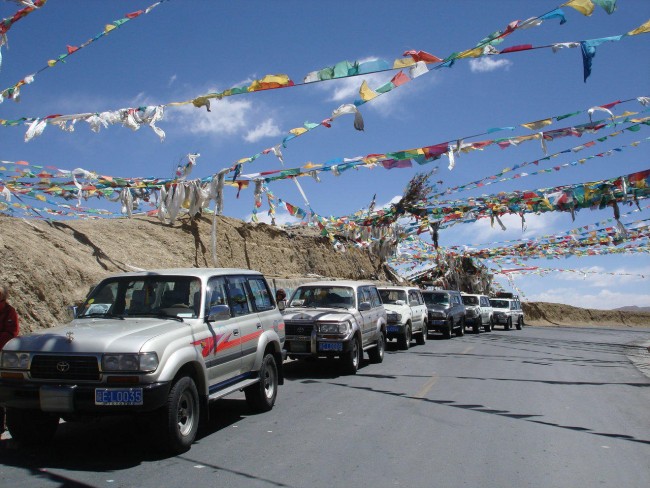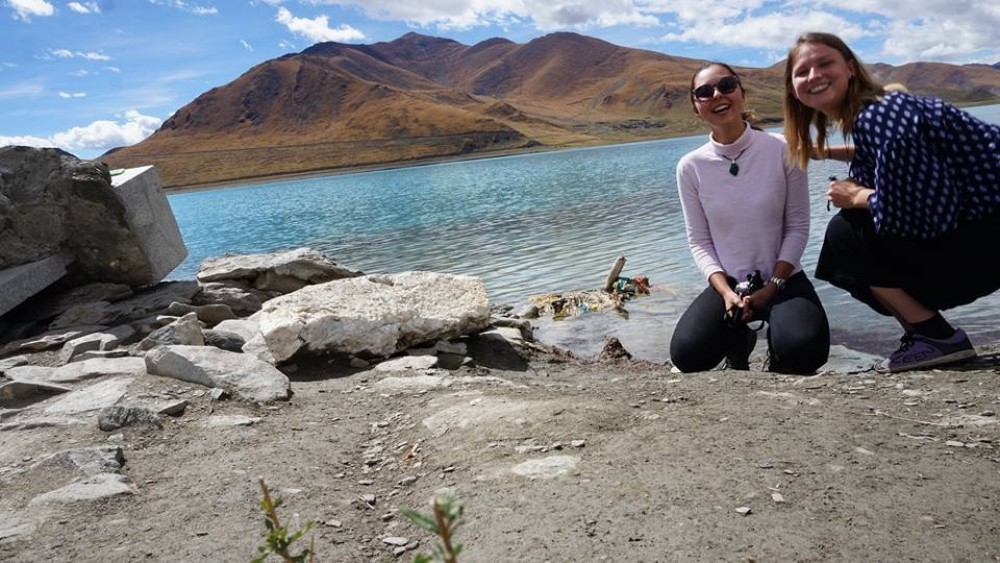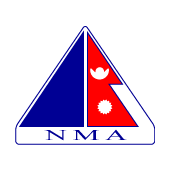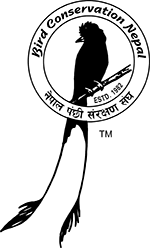- Tibet Kyirong border is the only border connecting Nepal and Tibet which was opened in August 2017 for foreigh Travellers.
- Kyirong is 2800m above sea level, 755 km from Lhasa through Shigatse and it is only around 170km from Kathmandu. It is one of the cheapest and convenient way of travelling to Tibet from Nepal side.
- Zhangmu border was evacuated after an earthquake April 2015 dameged the border and is only open for Lorries and trucks only.
Tibet Overland Tour 7 Days and 8 Nights is a wonderful tour package where you can explore the beauty of Tibet and drive in the amazing landscapes. This drive in and fly out tour gives you an amazing experience of lifetime. Tibet Overland tour takes you to the beautiful landscapes, monasteries, serene lakes and several high passes. You can explore the rich Tibetan cultures and typical lifestyles of Tibetan people. You will enter to Tibet by overland Jeep drive from Nepal Side and then fly out to Kathmandu from Lhasa. Actual Adventure Pvt. Ltd. is a reputed registered travel agency which is organizing Tibet Overland Tour since several years. We do have years of experience in this field with overall satisfied and repeated customers each year. We vow to provide you a wonderful Tibet travel from Nepal.
Tibet Visa and Permit Information
All foreigners except Chinese and Tibetan need to obtain Tibet travel permit to enter Tibet. The Tibet visa is called Tibet Permit or invitation letter which is issued by Tibet Tourism Bureau. Any foreigner or tourist cannot apply Tibet travel permit by themselves. The Tibet visa comes in a paper and one must apply Tibetan Visa from a registered company only.
Note: The Tibet permit and Chinese visa is different. You should obtain Tibet permit only with the help of registered travel companies and cannot enter with Chinese visa. Actual Adventure Pvt.Ltd will help you to obtain Tibet permit.
Documents required for Tibet Permit/ Tibet Visa.
To obtain Tibet Permit you will need to have to submit the following documents in the company.
1. A copy of your passport with at least six month of validity. The copy can be sent through mail, viber, Whatsapp, facebook or any other social media apps.
2. Chinese visa copy (If you are entering from mainland China)
3. Latest passport size photo of the tourist travelling from Nepal. (This is only for travelers travelling through Nepal to fill up a form from Chinese Embassy.
It is better to provide your documents before 15 days to obtain Tibet Travel permit from Tibet tourism bureau. Because in peak tourist seasons the visa arrival might take more than a week. The normal time for visa arrival is tentatively one week.
Special Note: Diplomats passport holders, Journalists, professional media photographer and government officials are not able to issue their Tibet permit through ordinary travel agencies. They are only able to get Tibet travelling permit under the arrangement of Foreign Affairs. In case of visa applying for people coming under any of the above mentioned category the company should be informed earlier.
Tibet permit and Visa cost:
The Tibet permit cost for tourists is as follows.
Other Nationalities: USD 85 per person
American Nationality: USD 175 per person
Romanian passport holder: USD 115 per person
Canadian passport holder: USD 155 per person
Brazilian Passport Holders: USD 165 per person
Argentina Passport Holders: US$ 185 per person
Tibet Weather Chart
Tibet is a high altitude plateau of the worlds set among tall mountain ranges. The weather of Tibet varies a lot from region to region. The mountain ranges catch the rainfall before it reaches the plateau, so most of Tibet, Except for the southeast part, is desert steppe, tundra, or permafrost. Most of Tibet experiences frostiness at least six months of the year, and the highest lakes has ice from November to March. The weather of Tibet is in the chart below.
Tibet Weather Chart: / APPROXIMATE TEMPERATURE DURING YOUR VISIT IN TIBET, Lhasa
|
Nyalam
|
Tingri
|
Shigatse
|
Lhasa
|
Damsung
Namtso
|
Tsedang
|
Nyingtri
|
|
|
°C
|
°C
|
°C
|
°C
|
°C
|
°C
|
°C
|
|
|
Max
|
Min
|
Max
|
Min
|
Max
|
Min
|
Max
|
Min
|
Max
|
Min
|
Max
|
Min
|
Max
|
Min
|
|
Jan
|
2
|
-9
|
3
|
-17
|
9
|
-11
|
8
|
-4
|
2
|
-18
|
9
|
-3
|
9
|
-3
|
|
Feb
|
3
|
-9
|
5
|
-15
|
8
|
-8
|
9
|
4
|
1
|
-11
|
10
|
-6
|
7
|
-4
|
|
Mar
|
6
|
-4
|
8
|
-15
|
11
|
-4
|
13
|
4
|
4
|
-8
|
14
|
0
|
12
|
-1
|
|
Apr
|
8
|
-3
|
12
|
-7
|
15
|
1
|
17
|
3
|
7
|
-3
|
17
|
3
|
15
|
3
|
|
May
|
11
|
1
|
16
|
0
|
21
|
5
|
22
|
7
|
13
|
2
|
23
|
9
|
19
|
4
|
|
Jun
|
13
|
7
|
18
|
5
|
23
|
7
|
24
|
11
|
17
|
-4
|
24
|
11
|
22
|
12
|
|
Jul
|
14
|
7
|
17
|
8
|
22
|
8
|
22
|
10
|
17
|
6
|
22
|
12
|
23
|
12
|
|
Aug
|
13
|
7
|
17
|
8
|
17
|
7
|
21
|
8
|
14
|
5
|
21
|
10
|
24
|
11
|
|
Sep
|
12
|
5
|
14
|
3
|
17
|
7
|
20
|
8
|
12
|
3
|
20
|
9
|
18
|
9
|
|
Oct
|
7
|
-3
|
10
|
-14
|
13
|
0
|
16
|
3
|
9
|
0
|
19
|
8
|
15
|
5
|
|
Nov
|
6
|
-7
|
4
|
-15
|
10
|
-13
|
9
|
-5
|
6
|
-5
|
15
|
4
|
15
|
-4
|
|
Dec
|
2
|
-8
|
2
|
-17
|
4
|
-12
|
5
|
-9
|
6
|
-15
|
8
|
-5
|
12
|
-3
|
The Main Features of Tibet’s climate
- Tibet has Strong sunshine at day
- The weather is normally Cold and dry
- There is large temperature difference at Day/Night
High altitude results in Tibet:
- Less Oxygen content.
- Lower boiling point
- Thin air
Best time to Visit Tibet
The best time to Visit in Tibet is during May to October. During this season the temperature is average and the weather is warm with higher oxygen content. The normal temperature is above 10°C to 14°C. The weather offers the most wonderful views during this season.
Rainy Season in Tibet:
Tibet receives very less rainfall during a year. July and August is the rainy season in Tibet, although, this is beyond of the Himalayas so apart from the southeast, There are still not much rain in rainy season because of being a rain shadow area.
Best Time for Camping in Tibet:
September- May is the best time for camping in Tibet. This time gives you a best camping experience offering crystal clear views of the surrounding peaks with clear skies.
Currency Exchange in Tibet
Currency and Exchange:
Chinese RMB or Chinese Yuan currency (RMB) can be used in Tibet. The rates are fluctuated frequently so it is better to check the rates before you go. US Dollor is also acceptable in Tibet except Yunan currency and Chinese RMB. Credit card is acceptable by the Bank of China and few hotels and shops. It is better to carry small amount of cash with you while travelling to Lhasa. The banks are closed in Saturday and Sunday in Tibet.
Money changer/ ATMS/ Bank in Tibet:
You can find few ATMs and money changers in Lhasa and it is very difficult changing your currencies out of Lhasa. We suggest you to have enough money with you while travelling out of Lhasa. The foreign exchange facility is provided by only the Bank of China.Big hotels and few shops accepts credit card in big cities like Lhasa, Gyantse and Shighatse.
How to get in to Tibet
Foreigners cannot travel to Tibet as backpackers. The Tibetan visa can be obtained only from registered travel Agency. The Tibetan visa Permit can be obtained by Nepal and Mainland China. The procedures to obtain Travel Permit from both countries are different. You can choose Actual Adventure to obtain Tibet Visa Permit. We have high success rate and we have organized several trips to Tibet with years of experience.
How to get in to Tibet from Nepal?
Getting into Tibet from Nepal is a popular choice among the people travelling to Tibet. Since, it is the closest and most convenient route to Tibet. The Kodari Border is the main entry point to enter Tibet from Nepal overland. Because of the huge landslide after earthquake in 2015 in Nepal, the boarder was closed and now the overland tour from Nepal is operated from Kerung Border.
How to Go to Tibet by Flight?
Only Nepal has direct international flights to Tibet other countries don’t have direct international flight to Tibet. It is better to arrive a day earlier at Kathmandu to fly to Tibet from Nepal. Or you can also fly to Maniland Airport of China and travel to Tibet. You need to have original Tibet Travel Permit with you and also China visa if you are travelling from China side.
Flight To & from Kathmandu to Lhasa.
There are two airlines operating flights to Kathmandu and Lhasa. Air China and Sichuan Airlines operates daily flight to Tibet during peak tourist seasons and three flights a week in low season. To book a flight you already need to book a package from a registered travel agency like Actual Adventure Pvt.Ltd. The package includes Tibetan Guide, airport transfer, your accommodation, Tibetan Visa, Tibet Travel Permit and sightseeing tour in Tibet. You don’t need TTB permit to book a flight from Mainland.
Kathmandu to Lhasa flight:
The schedule of the flights from Kathmandu to Lhasa (in and out) is given in the table below.
|
Departure
|
Arrival
|
Approx duration
|
Flight Fare ( USD)
|
|
Kathmandu
|
Lhasa
|
1 hours 15 minuets
|
Changeable
|
|
Departure
|
Arrival
|
Flight no
|
Airlines
|
Carry-on and Check in baggage
|
|
12:20
|
16:05
|
CA 408
|
Air China
|
05km / 20 kg
|
|
Frequency :- Every day flights in peak season ( April to October) and four flight a week in low season ( Tuesday, Thursday and Saturday ( November to March)
|
Lhasa to Kathmandu flight:
|
Departure
|
Arrival
|
Approx duration
|
Flight Fare ( USD)
|
|
Lhasa
|
Kathmandu
|
1 hours 15 minuets
|
Changeable
|
|
Departure
|
Arrival
|
Flight no
|
Airlines
|
Carry-on and Check in baggage
|
|
12:10
|
11:20
|
CA 407
|
Air China
|
05km / 20 kg
|
|
Frequency :- Every day flights in peak season ( April to October) and four flight a week in low season ( Tuesday, Thursday and Saturday ( November to March)
|
Get in to Tibet from mainland China
If you are travelling to Tibet from Mainland China then there are two options i.e. via Train or flight. The cheapest means to get in Tibet from China is by Train. The main cities like Chengdu, Beijing, Guangzhou, Shanghai, Xian and Xining is connecting with railway to Tibet. The tickets can be booked through travel agencies. Also another option for getting into Tibet from China is via Flight. The main cities of China like Beijing, Shanghai, Xian, Xining and Guangzhou operates direct flight to Lhasa.
Note: The Chinese government can change the rules of getting into Tibet which may be immediate and may not have been informed to anyone. In such case the company will not be responsible and all the travelers will be obliged to follow their rules.
Tibet History and Geography
A Short History of Tibet:
According to Tibetan history, Tibet is particularly focused on the history of Buddhism in Tibet. This is partly because this religion has played an important role in the development of Tibetan cultures and partly because Mongol almost all native historians of the country were Buddhist monks. Tibet started with The Yarlung Empire, according to history and folk tales, the Tibetan people originated from the union of a monkey and an ogress.
This mythical event took place within a cave on Mt. GonpoRi, a ridge overlooking the historic Yarlung Valley. A firmer historical viewpoint is provided by an authoritative Tang Annals, of 10th Centaury Chinese text, which recorded that the Tibetans were derived from the Qiang (Ch'iang) tribes, a nomadic and pastoral people that lived on the steppes northwest of China. Prior mention of these tribes has surfaced as early as 200 BC. Reliable sources traces Tibetan history begin from late 6th century AD, NamriSongsten( 570-619 AD) of Yarlung Valley was a chief who ruled part of the divided country.
After joining forces with rival factions, he began to exert control over much of Central Tibet and became a significant military force in Inner Asia. He subjugated several Qiang tribes on the Chinese border and was known to the Sui dyanasty (581-617) as 'Commander of 100,000 Warriors'.
Tibetan tradition consider him as 32nd king in a line that started with NyatriTsenpo, the mythical ruler who miraculously descended from the sky to Mt. YalaShampo at the head of the Yarlung Valley (during the reign of Lhatotori, the 28th king, Buddhist scriptures fell from the sky, heralding the transmission of Buddhism throughout the country). NamriSongtsen's son, SongtsenGampo (617-50 AD), was crowned king in 629. He continued to expand the empire and threatened China's western border during the 3rd decade around 7th C.
To appease him, in 641, Emperor Taizong (r 626-49) of the Tang Dynasty gave him one of his daughters, Princess Wencheng, in marriage. Even before that, however, Songtsen'sGampo had subjugated Nepal and annexed the Bon-Po kingdom of Shangshung in West Tibet, marrying in 632 the Nepalese Princess (Brikuti).
She was the daughter of Anshuvarman, minster of King Shivadeva and until 621 de facto ruler of Nepal by 648,Songtsen has also invaded northern India.
SongtsenGampo the first religious King (Chogyal). Through marriage he was influenced by Buddhism and it was he who founded Jokhang and Ramoche, the foremost temples of the land. Tibetan religious culture was given a further boost when his minster, ThonmiSambhota, devised the Tibetan alphabet, based on an Indian script.
The enabled Buddhist scriptures from India to be freely translated, Tibet’s first half of the 7th C. looked west as well as east for its cultural, religious, and political inspiration.
In addition to India, both Nepal and China contributed vital influences: vestiges of Nepalese art, particularly Newari woodwork, can still be seen today in the magnificent door frames and columns of the Jokhang.
Two decades after the death of SongtsenGampo, border hostilities between Tibet and China resumed in the present-day Chinese provinces of Qinghai and Xingjiang.
This state of conflict lasted for the next two centuries and the Tibetans, sometimes with the help of the Western Turks, fought the Chinese for control of the lucrative Central Asian Silk Routes.
TrisongDetsen (742-97 AD) was the Second Religious King. A century after SongtsenGampo, he ascended the Yarlung throne (755 AD), and over the following half-century, he further extended Tibetan military power, in 763 AD, his army actually occupied Changan (modern Xi'an), the Chinese capital, and for a short time supported a puppet emperor.
His most important contribution to Tibetan history was not territorial. He was immortalized for nurturing Buddhism. At the age of 21, TrisongDetsen invited some of the greatest Buddhists gurus of India and China to Tibet.
Since then Tibet was fully a Buddhism country with great influence of Guru Padmasamava “Guru Ringboche’ who started the Nyinpa (Red Hat) sect of Buddhism, later TshoKapa established Gelugpa (Yellow Hat) sects in 11th C and followed by Kyigapa-Sakyapa sects. Till then Mongol ruled Tibet for hundreds of years appointed Dalai Lama as head of state from 6th Dalai Lama onward till the 14th Dalai Lama who now lives in India after Chinese occupation of Tibet in late 1950’s.
Geography of Tibet:
The geography of Tibet consists of the high mountains, lakes and rivers lying between central, east and South Asia. Traditionally, Western (European and American) sources have regarded Tibet as being in Central Asia, though today's maps show a trend toward considering all of modern China, including Tibet, to be part of East Asia. Tibet is often called "the roof of the world, comprising tablelands averaging over 4,950 meters above the sea with peaks at 6,000 to including Mount Everest, on the border with Nepal. It is located on world highest and largest plateau annexed in late 1950’ as Autonomous Country of China. Tibet’s vast landscapes stretch from green forest to arid dry moonscapes, huddled in rain shadow behind the Northern Himalaya massive range.
Tibet with its high country known as the roof of the world and still retains mysterious as it was for many past hundred of centuries, travelers can feel the age of medieval period and a taste of Shangri-la.
Tibet covers total area of 471,900 sq. miles / 1,221, 700 sq.km extends 2,600 k.m. from West to East and 1,300 from North to South where high Himalayan are the barrier bordering neighboring countries, extends from 78° to 90° Longitude East and from 28° to 37° Latitude North.
Tibet with an average elevation of over 3000 meters / 8,000 ft reaches above 5,000 m where some villages are located even above 4,000 m high, where snow capped peak ranges from above 5,500 m, 6,000 m, 7000 m to 8,848 m which is the top of Mt. Everest.
World highest mountains within Tibet are Mt. Everest, Cho-Oyu, Shisapangma and other over 6000 meters peaks. The southern border links Nepal and towards south West with India and Pakistan and towards south east Bhutan, Sikkim and all the way to Myanmar.
Since it open the door for visitors, one can travel by air or on surface reaching from mainland China and Nepal.
Tibet a country of 20 % forested area 40 % farm land and agriculture fields with 40 % of desolate, arid and windswept desert like territory where some of the world highest and largest salt lakes exist in all parts of Tibet, the holy Manasarover Lake, Raksas Tal (lake) Pigatsho Lake, The turquoise color lake of YamdrokTsho and beautiful Nam-Tsho Lakes with many rivers Brahmaputra (YarlungTsangpo) Karnali-Sutlej and Arun Rivers are some of the source of the rivers that fed from the glacier of Tibetan mountains.
THE TIBETAN FESTIVALS
Introduction to Tibetan Festivals.
In Tibet festivals are celebrated nearly all round the seasons where events and occasions are of various types to celebrate the festival, most of the events are religious and some are related to harvest and nature spirits.
Most of the religious festivals are related to Lord Sakyamuni the founder of Buddhism and his followers, as the time passed by more festivals event was added as per the rulers and main head priest and kings like SongsantGampo-TshonKhapa founder of Gelygpa sect and many others.
The festivals are celebrated by people wearing their best new dress, visiting monasteries and chapels-shrines offering Khada (silk scarf), butter for the lamps and incense as well fruits-biscuits, money and food grains, most of the festival are celebrated dancing and singing, having rich meals and merrymaking, where several games and sports are also held to mark the occasion like archery and horse race.
The main important festivals are Saga Dawa (birth anniversary of Lord Sakyamuni Buddha) and
Losar (Tibetan New Year)
|
01:
|
1st Month around 1st -7th Feb
|
Merrymaking, horse racing, dancing and as well as gambling.
|
|
02:
|
1st Month around 14th -25th Feb
|
Monlam Festival originated by TsongKhapa,
|
|
03:
|
1st Month around 15th Feb
|
Festival of Light All local monasteries and houses are illuminated with butter lamps with prayer service.
|
|
04:
|
2nd Month 21st March
|
Offering and assemble of Lamas (Tshogchho) Priest and monks known as Lamas of Sera-Drepung and Ganden monasteries assemble in Lhasa for the offering and prayer.
|
|
05:
|
2nd Month 28th-29th March
|
Festival to drive out Evil where Lamas surround the city of Lhasa with trumpets and chanting.
|
|
06:
|
3rd Month 8th April
|
Official ending of winter months / seasons and celebrate the beginning of spring season.
|
|
07:
|
4th Month 7th May
|
Birth of Sakyamuni Buddha ‘Saga Dawa’ visit monasteries and offer prayer and light lamps.
|
|
08:
|
4th Month 15th May
|
lamps with outdoor opera and releasing captures animals and birds.
|
|
09:
|
5th Month 14th – 16th June
|
inShigatse (Tibet’s 2nd biggest cities) with celebration.
|
|
10:
|
5th Month 15th -24th June
|
Worship of Buddha with picnics and parties in various parks and in Norbulinka (summer palace of Dalai Lama)
|
|
11:
|
6th Month 4th July
|
Minor festival of lights to celebrate Buddha’s first sermon.
|
|
12:
|
6th Month 30th - 31st July
|
Foil the Devil visits Drepung monastery to watch dancers.
|
|
13:
|
8th Month 1st – 07th September
|
Harvest Festival prayers, singing dancing and partying.
|
|
14:
|
8th Month 1st – 10th September.
|
Dajyur festival of Gyantse Games and Horse Race.
|
|
15:
|
9th Month 22nd October
|
Buddha descent from heaven after preaching his mother
|
Please note that the dates above can differ as per Tibetan Lunar calendar
Tibetan Culture:
The culture of Tibetans are based on religious way of life and traditions some of the culture are practiced even before Buddhism came into Tibet around 7th Century, where Bon the ancient animism religion was worshipped and still exists in remote part of Far South West Tibet.
Tibetan culture starts with great hospitality where every guests and family member-relatives or friends are highly treated welcoming them with Khada (silk scarf) offering Tibetan Tea (a mixture of butter-salt and milk) or Chang (barley local beer).
The culture continues with day to day traditional way of life as handed by past generation and of Buddhist religions worshiping-prayer-going on pilgrimage to holy sites and celebrating social or religious festivals.
Like in most Asia countries woman are the household keepers and running the family life as well working in farm fields and animals husbandry. In spare time they knit with yak / sheep wools, while men folk mostly do outdoor works farming and as Sheppard or traders.
Tibetan culture is full of liveliness of merrymaking-drinking and dancing on occasion in wedding-festivals. But morning time is spared for prayers and lighting lamps and burning incense of dry juniper and azalea (dwarf rhododendron plants).
Language of Tibet
Language and Literature in Tibet developed as a literary language from the 7th Centaury onward owing to its contact with places of Khotan, Gilgit, Kasmir, Kula and Nepal, Tibetan adopted the Indian script to suit their own very different language. The literature came into existing between 7th and 13 th Centauries which are translation of Buddhist literature from ancient Sanskrit.
This was produced by Indian Guru’s-scholars and Tibetan translators and Tibetan created a new vocabulary and philosophical terms, done in simple and practical forms. However such manuscripts
The translations of Buddhist literature also inspired followers of earlier Bon religion to write their own teachings and traditions using the new vocabulary.
TIBETAN PEOPLE AND LIFESTYLE
The people of Tibet are engaged in several occupations from cleric, noblemen, merchants, traders, farmers, nomads to outcasts.
Among the clerics there are lamas means superior ones, translated from Sanskrit word as Guru (teacher), earlier teacher were called lamas. The other word ‘Lamaism’ also came in but not appropriate word for Buddhism, however all monks are not lamas.
In the past large number Tibetans adopted religion as profession where each son from the family embraced priesthood. However Tibetans life is interwoven with modernization and urban life where the life style has slightly changed along with years of advance progress, but still retains its glorious culture and way of life as it was hundred of centuries closely attached to its heritage and old traditions.

